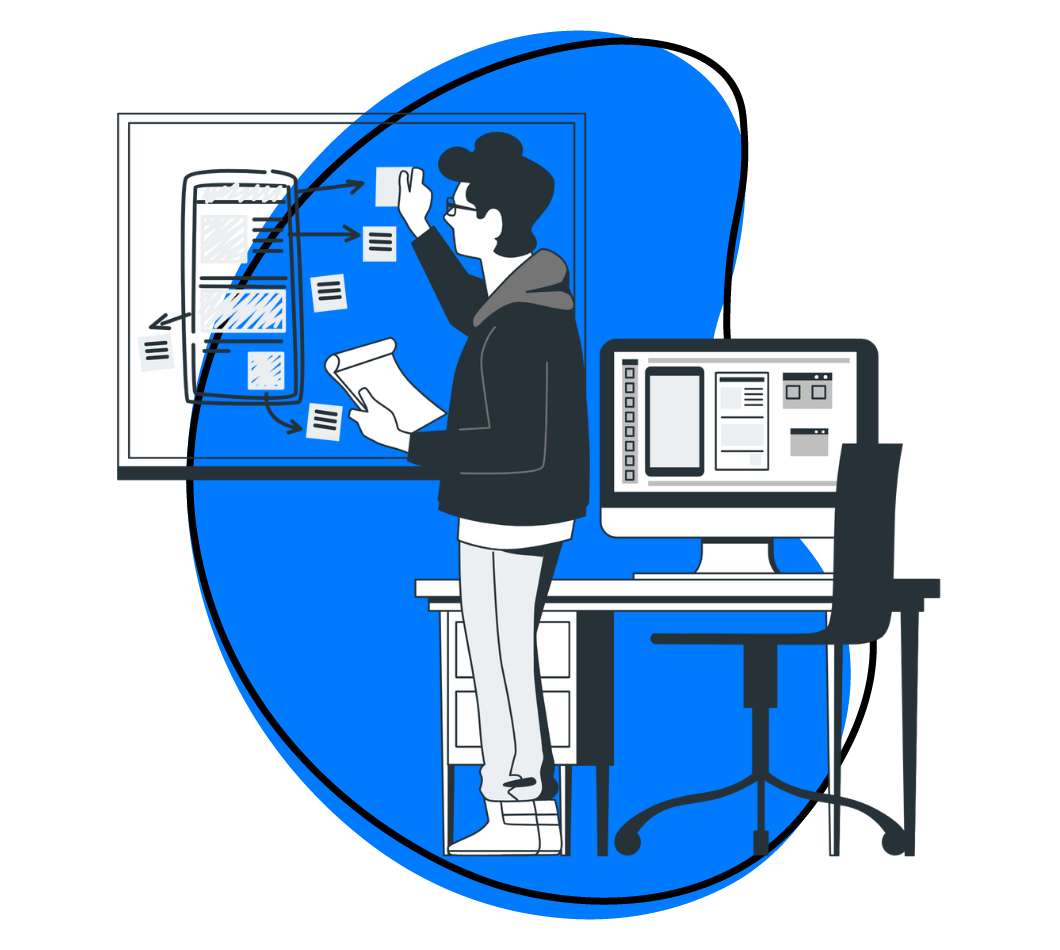Over the past few years, we’ve seen an incredible explosion of new UI design software, such as but not limited to Sketch, Adobe XD, Figma, Framer, and InVision. Naturally, designers talk about which new app is the best design tool. Software apps are critical to the design process. They allow us to express our ideas as high-resolution interfaces and interaction.
Before jumping into your selected UI app of choice, don’t forget about the whiteboard. It’s a core part of the design process. A whiteboard is a simple tool, but it’s packed with superpowers that allow us as designers to discover our best ideas. You can explore customer insights, user journeys, come up with new product ideas, collaborate with team members and so much more. Let’s explore why whiteboards are exceptional design tools.
You Can Collaborate on a Huge Surface
Whiteboards come in many different sizes, but in general, they are bigger than most large computer monitors. Their large surface allows you to visualize more information at once. Collaborating is easier because there’s more material for more people to participate.
Additionally, a computer monitor is limited in size and uncomfortable for collaborating.If several people crowd around a monitor, it might be difficult to view the screen or someone might hurt their neck.
You are Free to Make Mistakes
Draw simple ideas, not high-quality renderings. Whiteboards are designed to sketch and erase on. Whiteboards, also called dry-erase boards, emphasize “erasing” as its superpower.
They are a perfect for the first half of the design process, where designers explore ideas and brainstorm. Designers think freely and don’t get tied up too early in pixel level design details.
You Can Involve the Entire Team
Whiteboards are fantastic tools for non-designers too. You can encourage other members in the product team or company to contribute ideas. Ideation is not limited to the “creative team”. You can involve team members who interact with customers and broaden the discussion. Now that’s a superpower!
You are Not Limited To Dry Markers
Whiteboards are great surfaces for a lot of different media. Beyond dry-erase markers, whiteboards also make a perfect foundation for Post-it Notes, posters, and print-outs. Ideas can be collaged together freeing the team from limiting thinking to a single medium and having their ideas defined by it.
Explore Many Ideas All At Once
With whiteboards, it’s easy to see and manipulate a lot of different concepts at once without the need of flipping between screens. Flipping between screens requires us to hold a bunch of different ideas in our mind at the same time.
I don’t know about you, but it’s hard for me to hold more than three complex ideas in my head at once. Instead, whiteboards allow me to see all the brainstorms at once and weigh their strengths and weaknesses at the same time. Now that’s a superpower!
Whiteboards and Accessories Are Inexpensive
A small whiteboard can cost $19, and a six-by-four whiteboard can be as cheap as $130. An eight-pack of assorted color dry erase markers is only $9.
In contrast, an Apple 27″ Widescreen LCD Monitor costs around $500, and competing monitors can cost up to $1,000. A Retina iMac is $1,800, and a Microsoft Surface Pro is $2,990.
Obviously, whiteboards and markers are inexpensive design tools. Their low cost makes it inexcusable for designers not to incorporate them as standard devices in their practice.
They are Portable Too
Whiteboards can be easily mounted on wheels to make them convenient to move from room to room. In case a whiteboard is not on wheels, but it needs to be moved, small boards are lightweight enough to be carried with help. A whiteboard’s large dimensions and inexpensive cost once again favor it as a critical tool in the design process.
It’s Not Just Me, Others Agree!
Jonathan Shariat ran a March Madness contest for designers to vote on the best design tool. Whiteboard was not on the list, but Paper/Pencil was. And guess what? Paper/Pencil, won! I would even argue that whiteboards might be better than the winner as they are more iterative and collaborative.
We asked our Twitter friends “How do you use whiteboards in your design process?” Here are their responses:
Here are a few more unique ways that designers use whiteboards to solve problems:
Cindy Chang, Senior Product Designer at Intercom, uses whiteboards in workshops to brainstorm ideas and collaborate with her team. If you want to lead a design workshop, I recommend that you read her article “Designing Workshops that Work.” ????
Summary
Whiteboards are fantastic tools to generate ideas, collaborate with team members, sketch, and inspire multiple paths of thinking. You don’t have to be an artist to participate. Everyone on the team can share ideas and be a part of the design process.
About the Author
Luksaz Lysakowski is a digital brand and product designer in the San Francisco Bay Area. He designs multi-platform tools for businesses to streamline their services and provide better experiences. Currently, he is the Design Director at Peek.com, where he co-develops the leading SaaS platform powering the tours and activities marketplace.
Luksaz’s previous design work includes online marketing for HBO and Warner Brothers, online communities for Pearson and SAP, and writing the Section 508 guidelines of Cornell University. Lukasz believes in learning from the community and engaging with designers. He co-organizes Mentor Night for Cascade SF, and loves guiding designers to succeed. Follow Lukasz on Twitter @lukasz_x2.












